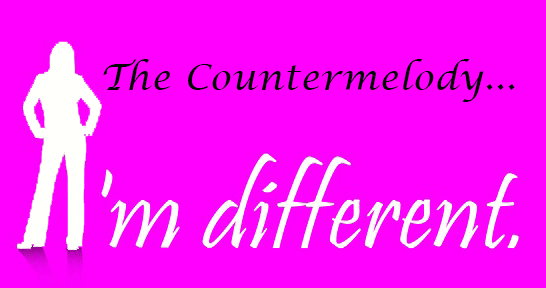
Featured Blog | This community-written post highlights the best of what the game industry has to offer. Read more like it on the Game Developer Blogs or learn how to Submit Your Own Blog Post
Arrangement for Vertical Layers Pt. 2
The second installment of a three-part series on arrangement for dynamic music systems, with examples from the LittleBigPlanet franchise. Part 2 focuses on techniques for employing countermelody in a complex vertical arrangement.

 Welcome back to my three-part series of articles on the art of arrangement for dynamic music systems in games! In this series, I’m discussing the techniques of arrangement as they pertain to interactive game music by exploring examples from the music I composed for video games from the LittleBigPlanet franchise. In part one of this series, we went over the role of the arranger, the importance of an interesting and creative arrangement, and the relationship between arranging for traditional linear and non-linear interactive music. We also reviewed arranging techniques that apply to melody, and how these should (or should not) be applied in an interactive composition. If you haven't read part one, please click here to read that entry first, and then return here to continue reading part two. Okay, are you back now? Ready? Here we go!
Welcome back to my three-part series of articles on the art of arrangement for dynamic music systems in games! In this series, I’m discussing the techniques of arrangement as they pertain to interactive game music by exploring examples from the music I composed for video games from the LittleBigPlanet franchise. In part one of this series, we went over the role of the arranger, the importance of an interesting and creative arrangement, and the relationship between arranging for traditional linear and non-linear interactive music. We also reviewed arranging techniques that apply to melody, and how these should (or should not) be applied in an interactive composition. If you haven't read part one, please click here to read that entry first, and then return here to continue reading part two. Okay, are you back now? Ready? Here we go!
The countermelody
 A countermelody is a second melody playing simultaneously with the main melodic line. Usually, the countermelody is perceived as subordinate to the foreground melody of the composition, but when we give it lots of love and attention, the countermelody can be as memorable and pleasing as the main melody of the piece. Not only does this make the overall composition stronger, but it works beautifully with the Vertical Layering construct of the LittleBigPlanet dynamic music system. When we create a countermelody for an interactive track, it's always best for us to keep in mind that this melody should be strong enough to stand on its own... because it may have to do just that.
A countermelody is a second melody playing simultaneously with the main melodic line. Usually, the countermelody is perceived as subordinate to the foreground melody of the composition, but when we give it lots of love and attention, the countermelody can be as memorable and pleasing as the main melody of the piece. Not only does this make the overall composition stronger, but it works beautifully with the Vertical Layering construct of the LittleBigPlanet dynamic music system. When we create a countermelody for an interactive track, it's always best for us to keep in mind that this melody should be strong enough to stand on its own... because it may have to do just that.
As we discussed in part one of this blog series, a melody in Vertical Layers often needs to stand in near (or even complete) isolation. When all the other layers are deactivated, the main melody has to be strong enough to carry the track forward and continue to entertain the gamer. This may also be true for the countermelody, if it has been assigned to a layer separate from that which the main melody occupies. Separating the melody and countermelody can be tremendously useful for this interactive music system, because then two of the layers contain unique, simultaneous foreground melodic content that can either coexist or be played separately. Of course, it's also possible to assign the melody and countermelody to the same layer, and we can decide to do that if it seems that these melody lines are too interrelated to sever. Let's now embark on a few arrangement concepts that work very effectively for countermelodies. Then we’ll wrestle with some arrangement techniques for countermelodies that can be questionable within the Vertical Layering system.
Effective technique: voice leading / step-wise movement
 As we discussed in the first part of this blog series, step-wise movement (voice leading) involves the creation of a sequence of notes that proceed smoothly and give the impression of logical development. The satisfaction that the listener experiences from hearing such natural, sensible movement in a melody arises from a long history of established conventions and practices in music theory. These include the many musical scales that have been formalized and named over the years: this long list will give us an idea of how many of these musical scales exist. The more familiar the musical scale, the more comfortable it will feel to the listener. Melodies typically follow the step-wise movement established by scales, and leaps within these melodies are designed to feel compatible with them.
As we discussed in the first part of this blog series, step-wise movement (voice leading) involves the creation of a sequence of notes that proceed smoothly and give the impression of logical development. The satisfaction that the listener experiences from hearing such natural, sensible movement in a melody arises from a long history of established conventions and practices in music theory. These include the many musical scales that have been formalized and named over the years: this long list will give us an idea of how many of these musical scales exist. The more familiar the musical scale, the more comfortable it will feel to the listener. Melodies typically follow the step-wise movement established by scales, and leaps within these melodies are designed to feel compatible with them.
In the previous blog we discussed how step-wise movement can make an isolated foreground melody feel satisfying on its own. This same principle applies to a countermelody that occupies its own layer within the Vertical Layering system. When that layer is played by itself, it should also feel rewarding and enjoyable. Step-wise movement will help the countermelody to continue to make aesthetic sense, even when detached from the rest of the arrangement and played on its own.
In this example from the "LittleBigPlanet 3 Stitchem Manor" track, we'll first hear the layer containing the melody (which is carried by the violin section). Then we'll hear the countermelody (performed by woodwinds). Finally, we'll listen to both the melody and countermelody layers playing together.
As we can see from the above example, both the melody and countermelody follow step-wise movement and the same scale and harmonic structure, so that the shape and movement of the melodic lines remains pleasing (both separately and combined). This example also demonstrates another arrangement technique that works well within this interactive system:
Effective technique: polythematic / polyrhythmic motion
One of the best ways for us to help the countermelody stand on its own as a viable melody in its own right is to distinguish it clearly from the main melody. We can emphasize contrast with two techniques that pertain to the ways in which melodies move.
 Polythematic music is sometimes defined as music structured around multiple melodies, but the term can also refer to the ways in which these melodies interact. Focusing on contrasting opposites in musical structure, the polythematic approach emphasizes contrary rhythms, textures, movements, and energy levels. If the main melody on top is sustained and slowly mellifluous, the countermelody underneath will feature short punctuated notes and energetic leaps. The emphasis is always on finding the greatest contrast between one melody and the other. This arrangement technique helps to clearly differentiate the two melodies, giving them unique musical identities.
Polythematic music is sometimes defined as music structured around multiple melodies, but the term can also refer to the ways in which these melodies interact. Focusing on contrasting opposites in musical structure, the polythematic approach emphasizes contrary rhythms, textures, movements, and energy levels. If the main melody on top is sustained and slowly mellifluous, the countermelody underneath will feature short punctuated notes and energetic leaps. The emphasis is always on finding the greatest contrast between one melody and the other. This arrangement technique helps to clearly differentiate the two melodies, giving them unique musical identities.
Polyrhythmic music is often defined as the juxtaposition of two contrasting time signatures (for instance, a jig rhythm set against a traditional common-time march). These combinations result in awesome rhythmic complexities which arise from the inconsistent downbeats characteristic of the two dissimilar time signatures. However, polyrhythmic music can also be defined as music that emphasizes syncopation and rhythmic complexity, particularly when there is an overall lack of a strong down beat. In describing this type of music in his book, What to Listen for in Music, the famous American composer Aaron Copland points out the incredibly clever 16th century madrigals that created complex rhythms without a clear time signature present. "The result makes for an unprecedented interweaving of independent rhythms," writes Copland. "The effect is anything but primitive." For an example of this technique, listen to the "Faulte d'argent" by 16th century composer Josquin Deprez:
Creating rhythmic contrast between a melody and countermelody is a great way to differentiate them, while also infusing the piece with energy and momentum.
Effective technique: polyphonic motion (contrary and oblique)
Polyphonic (or contrapuntal) music is defined as "many-voiced" - a composition that includes multiple independent melody lines. A countermelody is, by nature, a polyphonic construct. However, there are degrees of effectiveness between polyphonic techniques when used in a Vertical Layering system. Let's look at the two techniques that work best:
 Contrary motion (in which two melodic lines move in opposite directions)
Contrary motion (in which two melodic lines move in opposite directions)Oblique motion (in which one melodic line moves while the other does not)
These two types of polyphonic construction work well because they cause the melodic lines to diverge and display unique characteristics which set them apart from each other. We'll be talking about the other two types of polyphonic motion later in this article.
Effective technique: frequency range isolation
In the first installment of this blog series on arranging for Vertical Layers, we discussed the advantage of placing the main melody in a range that allows it to sing clearly through the mix, without interference. We can achieve this more easily if we place the pitches of the melody in a frequency range that is not currently occupied, and use an instrument with a tone color that isn't already represented in the rest of the arrangement. While this is important for differentiating the main melody from the accompaniment, it becomes doubly important when attempting to create contrast between the primary melodic line and its countermelody.
In this example from LittleBigPlanet 2 Victoria's Lab, I composed the main melody as a set of contrapuntal lines carried by a female choir:
The countermelody was also carried by a female vocal, so to make sure that the melody and countermelody didn't clash, I wrote the countermelody to be much higher. In this way, I made sure that it would occupy its own frequency range:
Let's listen to that excerpt from the LittleBigPlanet 2 Victoria's Lab track, with all layers now playing:
Effective technique: the bassline countermelody
 Sometimes this approach may seem less than obvious, but in conducive circumstances, the bassline of an arrangement can serve as an effective countermelody. The viability of this option relies on the logical step-wise motion of the bassline, and its ability to leap forward in the mix with enough dynamism to capture the listener's attention. For instance, in the LittleBigPlanet Cross Controller game, the HenOMorph Encounter track includes a bassline countermelody, which contrasts against a high-pitched electronic synth melody. This works partially because the main melody has simplified at this point, allowing the bassline countermelody to shine through. Here's an excerpt of the simple main melody:
Sometimes this approach may seem less than obvious, but in conducive circumstances, the bassline of an arrangement can serve as an effective countermelody. The viability of this option relies on the logical step-wise motion of the bassline, and its ability to leap forward in the mix with enough dynamism to capture the listener's attention. For instance, in the LittleBigPlanet Cross Controller game, the HenOMorph Encounter track includes a bassline countermelody, which contrasts against a high-pitched electronic synth melody. This works partially because the main melody has simplified at this point, allowing the bassline countermelody to shine through. Here's an excerpt of the simple main melody:
Here's the bassline countermelody:
Now, here's what it sounds like when all layers are playing:
Questionable technique: antiphonal style
 So now we move on to the countermelody arranging techniques that can be problematic for an interactive composition in Vertical Layers. We'll start with antiphonal style - otherwise known as either antecedent/consequent or (more simply put) question/answer style. This is the melodic structure in which a melody is split into phrases: one of these phrases creates a questioning tension, while the subsequent phrase releases that tension with a sense of welcome resolve. The question phrase is performed by one instrument or instrumental section, and the answer phrase is performed by another instrument or section. This is sometimes also known as "call and response."
So now we move on to the countermelody arranging techniques that can be problematic for an interactive composition in Vertical Layers. We'll start with antiphonal style - otherwise known as either antecedent/consequent or (more simply put) question/answer style. This is the melodic structure in which a melody is split into phrases: one of these phrases creates a questioning tension, while the subsequent phrase releases that tension with a sense of welcome resolve. The question phrase is performed by one instrument or instrumental section, and the answer phrase is performed by another instrument or section. This is sometimes also known as "call and response."
Antiphonal style can work in Vertical Layers if the antecedent and consequent are kept within the bounds of a single layer. While the phrases feel separate and distinct, and are performed by different instruments, the melody that they create still gives the impression of a single melody line, not a countermelody. We might be tempted to treat them as separate entities and split them into two layers, but that would likely create dissatisfying "half melodies" when the layers are played in isolation. We'd have a layer full of "questions" and another layer full of "answers."
Questionable technique: polyphonic motion (similar and parallel)
This problematic arranging approach is a direct echo of the "harmonized melody" problem (which we covered in part one of this blog series). The "many-voiced" of a polyphonic composition allows for types of motion between the melody lines. We've already talked about contrary and oblique motion, which work well for countermelodies, but there are two other types which don't function as well in a Vertical Layering system:
Similar motion (in which two melodic lines move up and down together, but not with an identical interval between them)
Parallel motion (in which the two melodic lines move up and down together while keeping the same interval between them)
 These two types of polyphonic construction essentially function as "harmonized melody." This kind of similar or parallel movement in two melodies renders them too alike for the purposes of a melody and countermelody in Vertical Layers. We should always seek contrast when creating two melodies that will coexist simultaneously in the same piece.
These two types of polyphonic construction essentially function as "harmonized melody." This kind of similar or parallel movement in two melodies renders them too alike for the purposes of a melody and countermelody in Vertical Layers. We should always seek contrast when creating two melodies that will coexist simultaneously in the same piece.
Questionable technique: homorhythmic texture
In homophonic movement, all pitches move together in parallel, ascending and descending as one unit. This concept usually implies homorhythmic texture, in which all the notes are performing identical rhythms. However, it is possible for the notes of a melody and countermelody to have contrasting motion, but an identical rhythmic structure. This would give us a homorhythmic texture between the melody and countermelody.
While the notes can be very different, there will still be perceived a sense of sameness instilled by the identical rhythms that both the melody and countermelody are performing. For this reason, it may be best for us to avoid a homorhythmic structure between the melody and countermelody in a Vertical Layering composition. We want these two melodic lines to give distinctly dissimilar impressions on the listener when played in isolation, and identical rhythms work against that goal.
Questionable technique: imitation
A countermelody that uses the imitation technique will repeat the exact notes of the main melody, but will do so in the manner of an echo: a delayed repetition of the melodic theme. The most popular and recognizable example of imitation is the "Row, Row, Row Your Boat" song we all learned as kids. The first voice begins the melody, and then after the passage of a couple of measures, the second voice begins the same melody.

This approach never works for a melody and countermelody in Vertical Layering, because the two melodic lines are identical. Regardless of the fact that they occur at different times, when they are heard in isolation they will sound and feel indistinguishable from each other.
Conclusion
So, we’ve completed our exploration of arrangement techniques for countermelodies that are effective within a Vertical Layering structure. In the third and final installment of this series, I’ll be talking about arrangement techniques for the harmonic support, including chord progressions, voicings and inversions. I hope you found this article to be helpful! I'd love to hear what you think in the comments!
 Winifred Phillips is an award-winning video game music composer whose most recent project is the triple-A first person shooter Homefront: The Revolution. Her other credits include five of the most famous and popular franchises in video gaming: Assassin’s Creed, LittleBigPlanet, Total War, God of War, and The Sims. She is the author of the award-winning bestseller A COMPOSER'S GUIDE TO GAME MUSIC, published by the Massachusetts Institute of Technology Press. As a VR game music expert, she writes frequently on the future of music in virtual reality video games.
Winifred Phillips is an award-winning video game music composer whose most recent project is the triple-A first person shooter Homefront: The Revolution. Her other credits include five of the most famous and popular franchises in video gaming: Assassin’s Creed, LittleBigPlanet, Total War, God of War, and The Sims. She is the author of the award-winning bestseller A COMPOSER'S GUIDE TO GAME MUSIC, published by the Massachusetts Institute of Technology Press. As a VR game music expert, she writes frequently on the future of music in virtual reality video games.
Follow her on Twitter @winphillips.
Read more about:
Featured BlogsAbout the Author(s)
You May Also Like







.jpeg?width=700&auto=webp&quality=80&disable=upscale)








